Colorado Blue Spruce
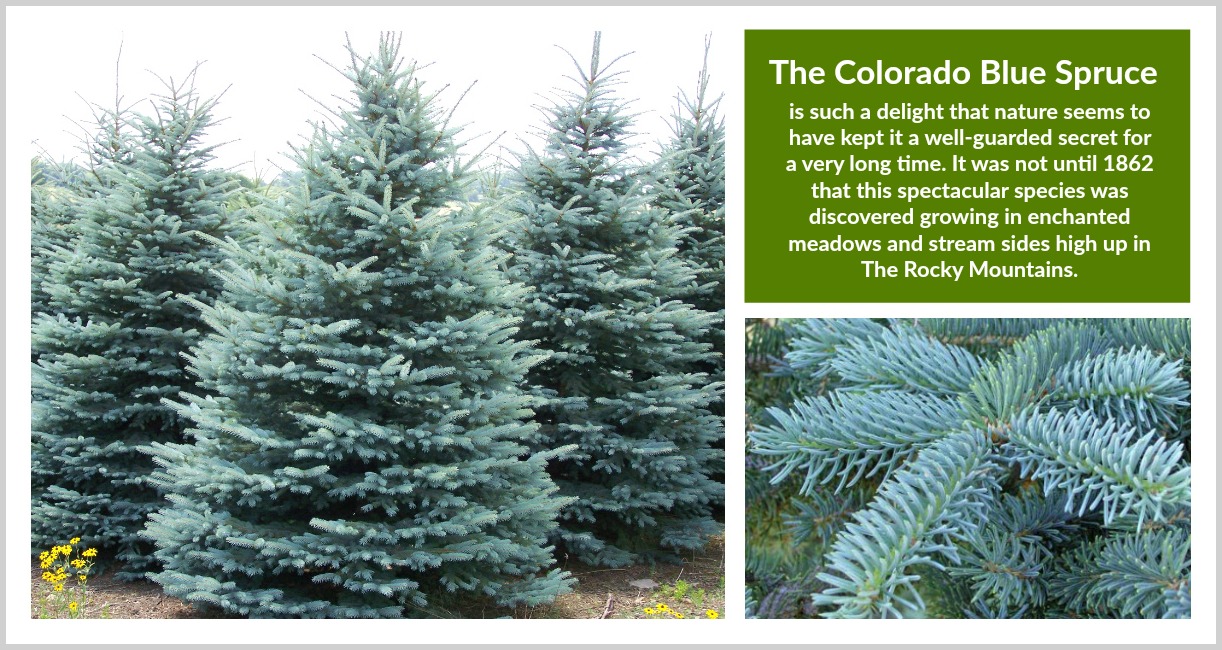
Colorado blue spruce, or blue spruce, is an attractive tree often used for Christmas trees or as ornamentals, particularly in the eastern United States and Europe. It is the official state tree of both Colorado and Utah. The species generally reaches a height of 65-115 feet at maturity with a diameter of 2-3 feet. It has a narrow, pyramidal shape and cone-shaped crown. As trees become older, they often take on a more irregular appearance. While blue spruce grows relatively slowly, it is long-lived and may reach ages of 600-800 years.
Canaan Fir
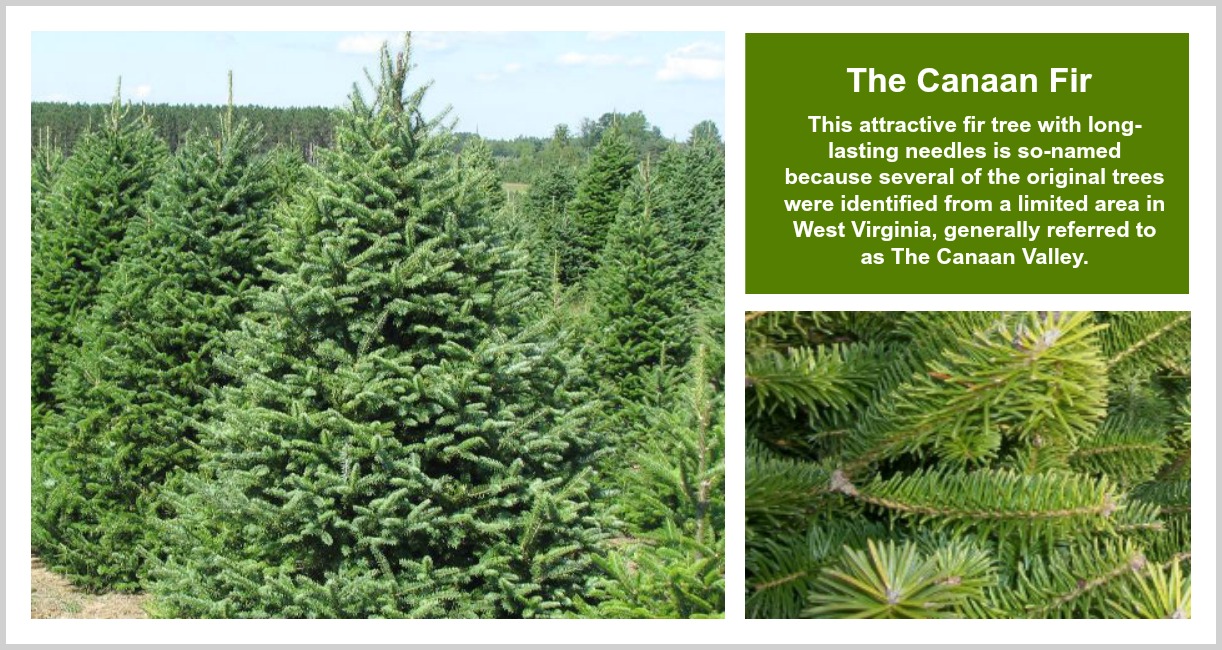
Canaan (pronounced “Ka-naan”, with emphasis on the last syllable) is a relative newcomer to the Christmas tree market. It has many similarities to both Fraser and balsam firs in growth and appearance. Unfortunately, this similarity which has led to a great deal of confusion. In 1909, a variety of balsam fir was described in the literature as having cone scales extending from the bracts. This morphology was a deviation from typical balsam fir cones where the scales are not extended. This variety was then named “phanerolepis” which actually means conspicuous scales. The scientific name of Abies balsamea var. phanerolepis was assigned. The common names most often used were “bracted balsam fir” and “Blue Ridge fir”. Canaan fir had not, at that time, been described separately.
Concolor Fir
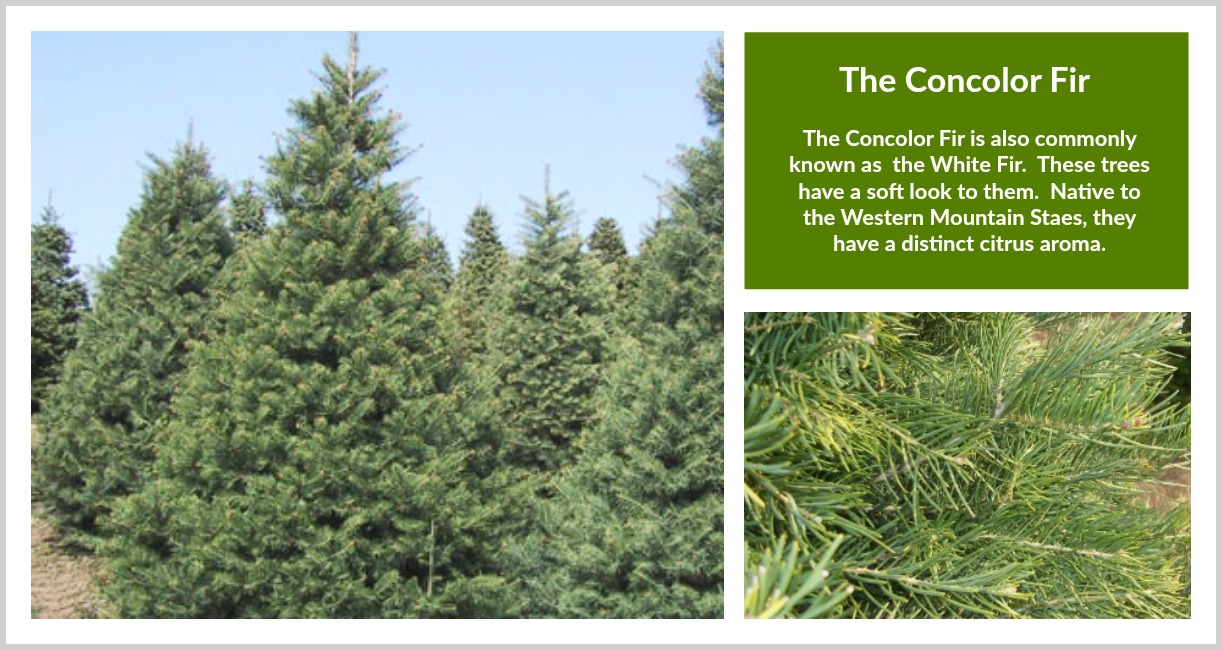
White fir, also commonly called concolor fir, is native to the western United States and may reach sizes of 130-150 ft. in height and 3 to 4 ft. in diameter. The oldest white firs may occasionally reach 350 years of age. It produces a spire-like crown with a straight trunk. Leaves (needles) are small and narrow and occur in rows. On upper branches, needles tend to be thicker and more curved than those on lower branches. Needles are usually 1/2 to 1 1/2 inch long, pointed or notched at the tip, bluish-green when young turning dull green with age. Typically, they are flat, without stalks.
Fraser Fir
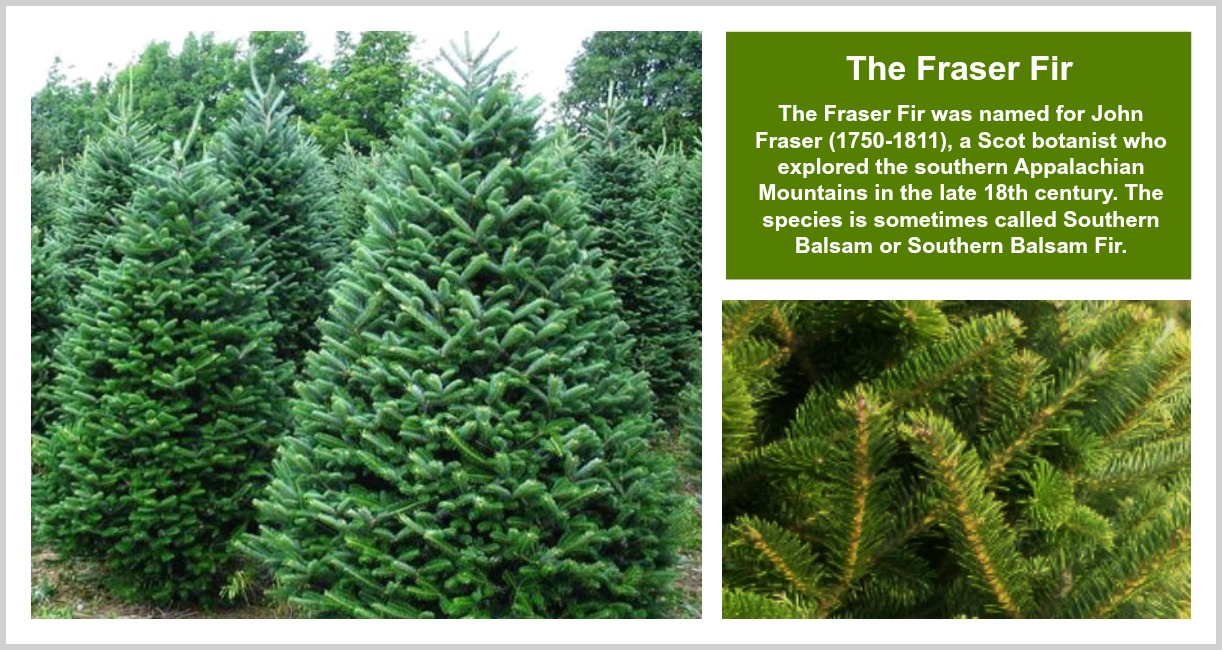
In many respects, Fraser fir and balsam fir are quite similar, although the geographic ranges of the two species do not overlap. Some scientists even suggest that because of the many similarities, the two species were once a single species which has since evolved into the present-day forms. Leaves (needles) are flattened, dark-green with a medial groove on the upper side and two broad silvery-white bands on the lower surface. These bands consist of several rows of stomata (pores). Leaves are 1/2 to one inch long, have a broad circular base, and are usually dark green on the upper surface and lighter on the lower surface. On lower branches, leaves are two-ranked (occurring in two opposite rows). On upper twigs, leaves tend to curl upward forming a more “U-shaped” appearance.
Norway Spruce
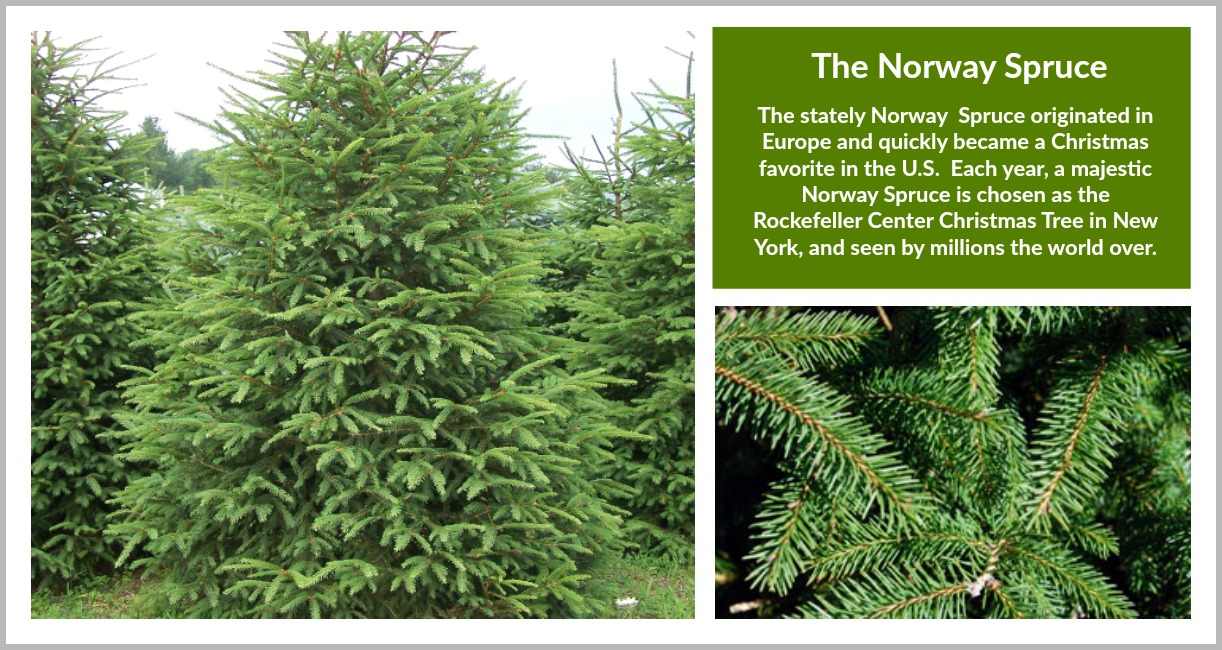
Norway spruce is one of the most important species on the European Continent. More than 100 forms and varieties have been named. Although not native to the Western hemisphere, the species and a number of its varieties are commonly planted here, particularly in southeastern Canada and northeastern United States. Originally, a number of plants were established as ornamentals, with Christmas tree plantings being established more recently. It has escaped cultivation in several localities and is considered naturalized in some of these areas. Leaves (needles) are 4-sided (rectangular in section), 1/2-1 inch long, and sharp or somewhat blunt at the tip. At the base of each needle is a twig-like projection (sterigmata) which remains after the needle is lost. Although sometimes confused with true firs (Abies), spruces in general have 1) rectangular rather than flat needles, and 2) cones which hang down rather than stand erect on the stem.
Douglas Fir
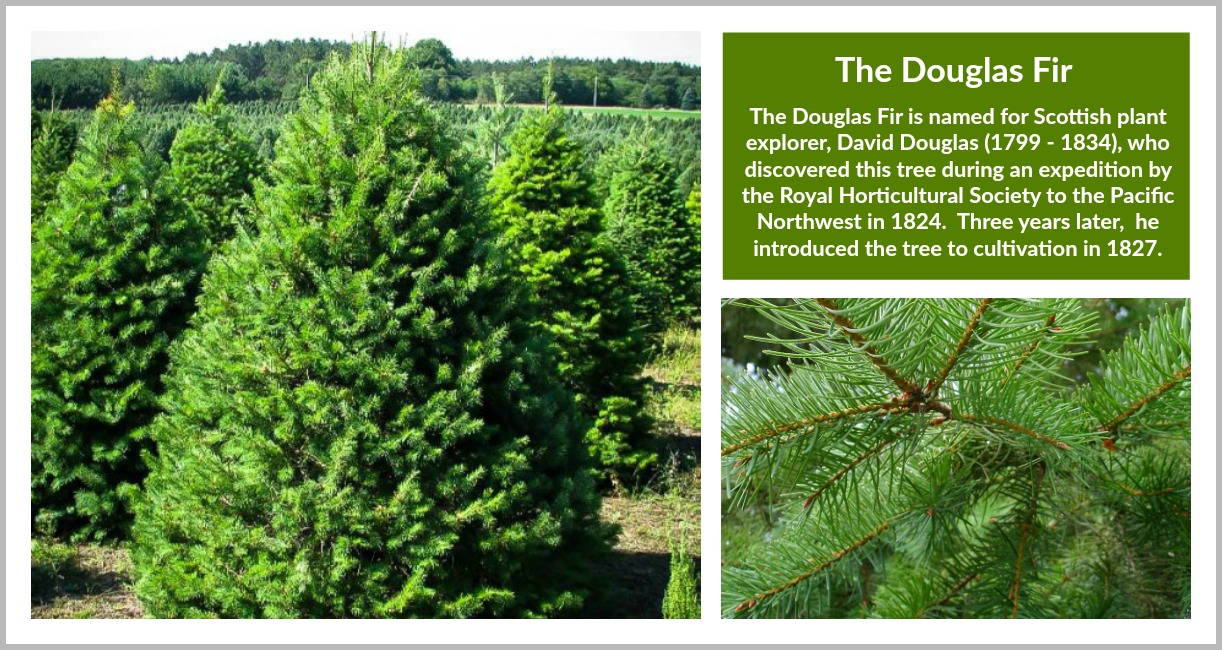
Douglas-fir is not related to the true firs. This wide ranging species grows from 70 to 250 feet tall. The branches are spreading to drooping, the buds sharply pointed and the bark is very thick, fluted, ridged, rough and dark brown. The needles are dark green or blue green, 1 to 1 1/2 inches long, soft to the touch and radiate out in all directions from the branch. They have a sweet fragrance when crushed.
Eastern White Pine
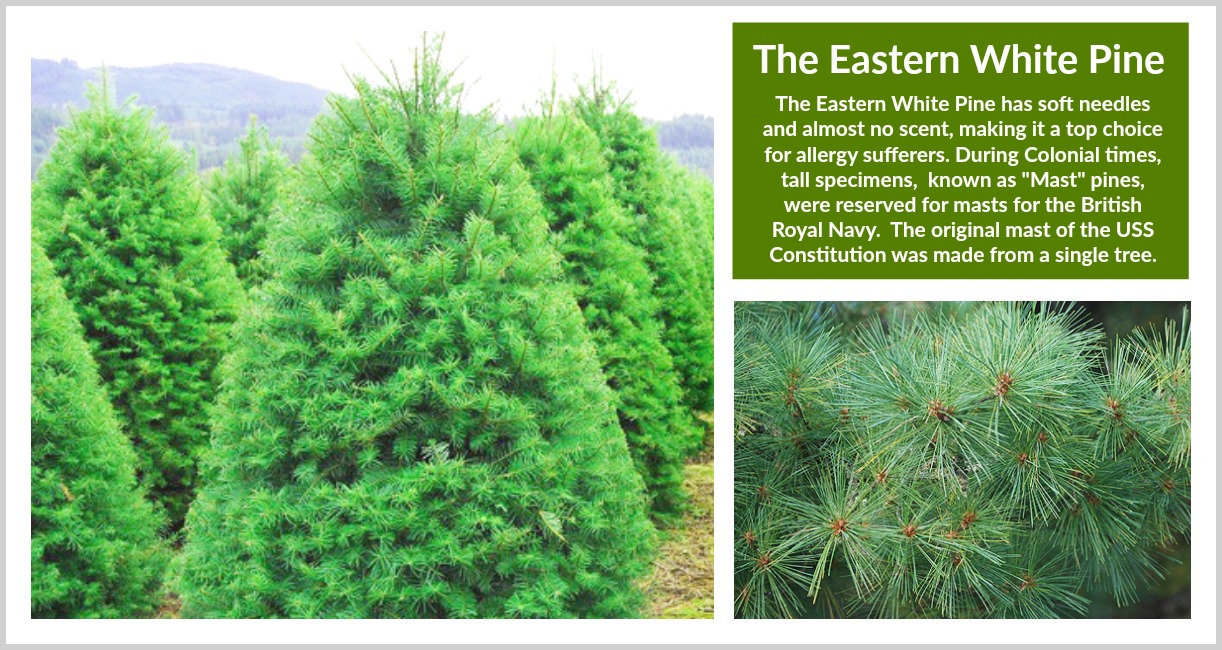
Beginning with the British colonists, eastern white pine (or white pine) has proven to be one of the most important and most desirable species of North America. It is a truly magnificent tree attaining a height of 80 feet or more at maturity with a diameter of two to three feet. White pine is considered to be the largest pine in the United States. Leaves (needles) are soft, flexible and bluish-green to silver green in color and are regularly arranged in bundles of five. Needles are 2 1/2-5 inches long and are usually shed at the end of the second growing season. Both male and female flowers (strobili) occur on the same tree, with pollination occurring in spring. Cones are 4-8 inches in length, usually slightly curved and mature at the end of the second season. Cone scales are rather thin and never have prickles. Cones also have exudations of a fragrant gummy resin.
Noble Fir
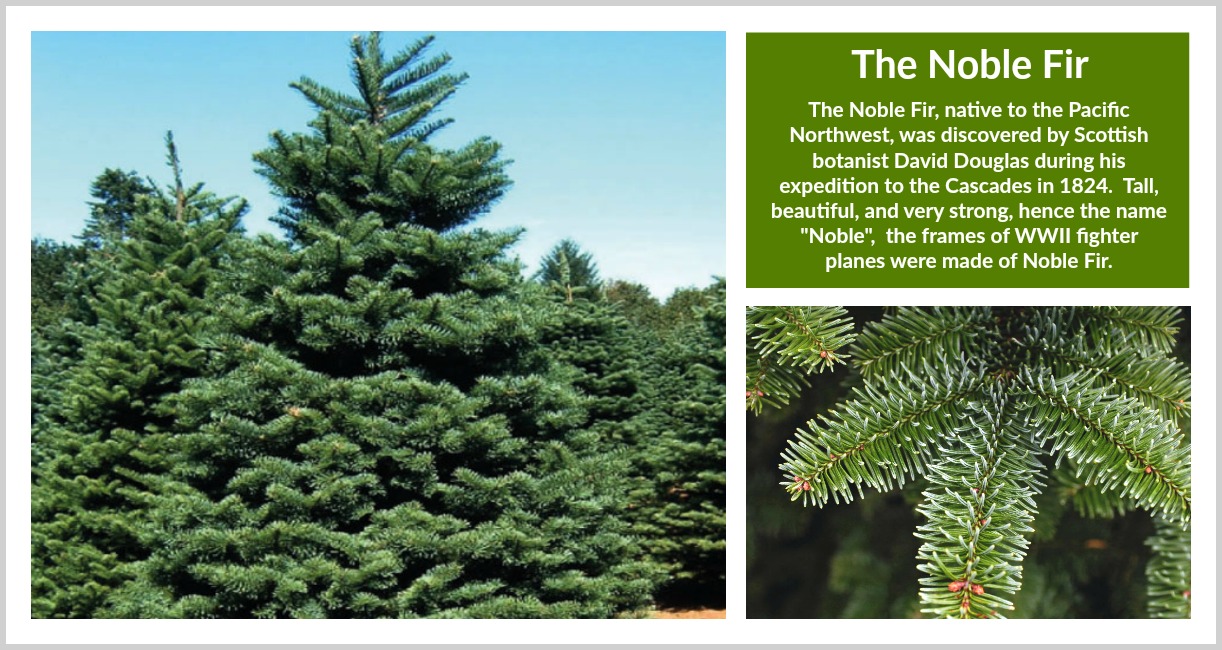
In the wild, the trees are tall, beautifully symmetrical and grow to over 200 feet in height. The bark is smooth with resin blisters when young and changes to brownish-gray plates with age. The needles are roughly 4-sided (similar to spruce), over 1 inch long, bluish-green but appearing silver because of 2 white rows of stomata on the underside and 1-2 rows on the upper surface. The needles are generally twisted upward so that the lower surface of branches are exposed.
Scotch Pine
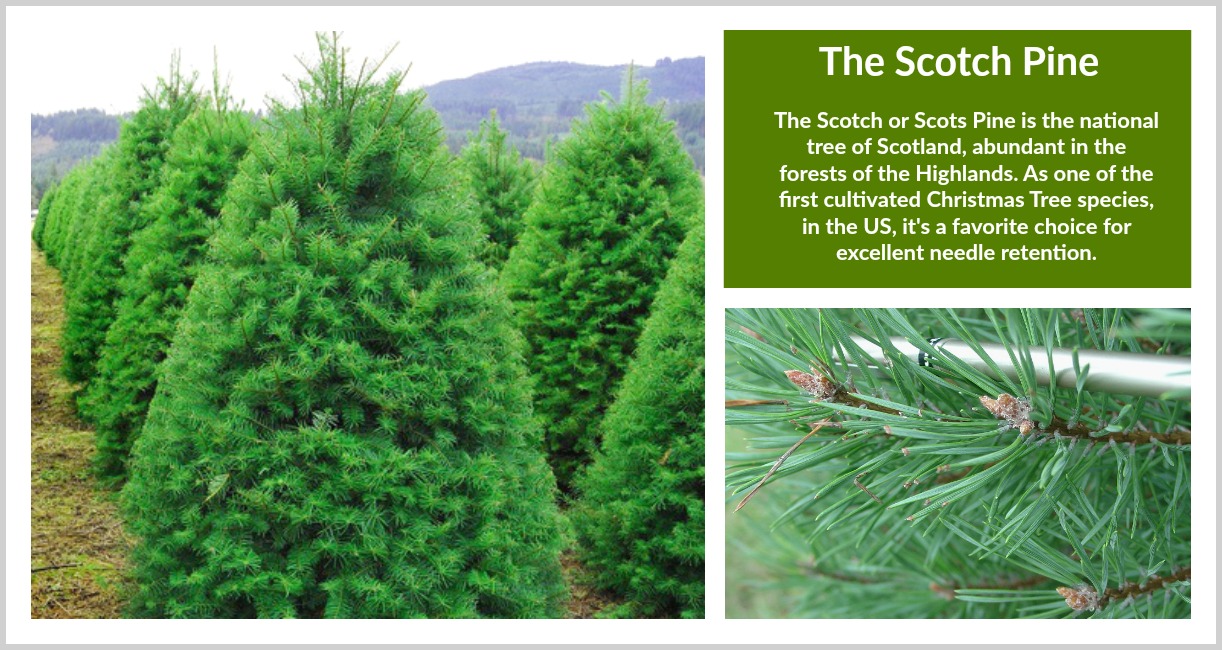
Scotch or Scots pine is an introduced species which has been widely planted for the purpose of producing Christmas trees. It is an extremely hardy species which is adaptable to a wide variety of soils and sites. As a Christmas tree, it is known for its dark green foliage and stiff branches which are well suited for decorating with both light and heavy ornaments. It has excellent needle retention characteristics and holds up well throughout harvest, shipping and display. The needles of Scotch pine are produced in bundles of two. They are variable in length, ranging from slightly over 1-inch for some varieties to nearly 3-inches for others. Color is likewise variable with bright green characteristic of a few varieties to dark green to bluish tones more prominent in others. The undersides of Scotch pine needles are characterized by several prominent rows of white appearing stomatal openings.
White Spruce
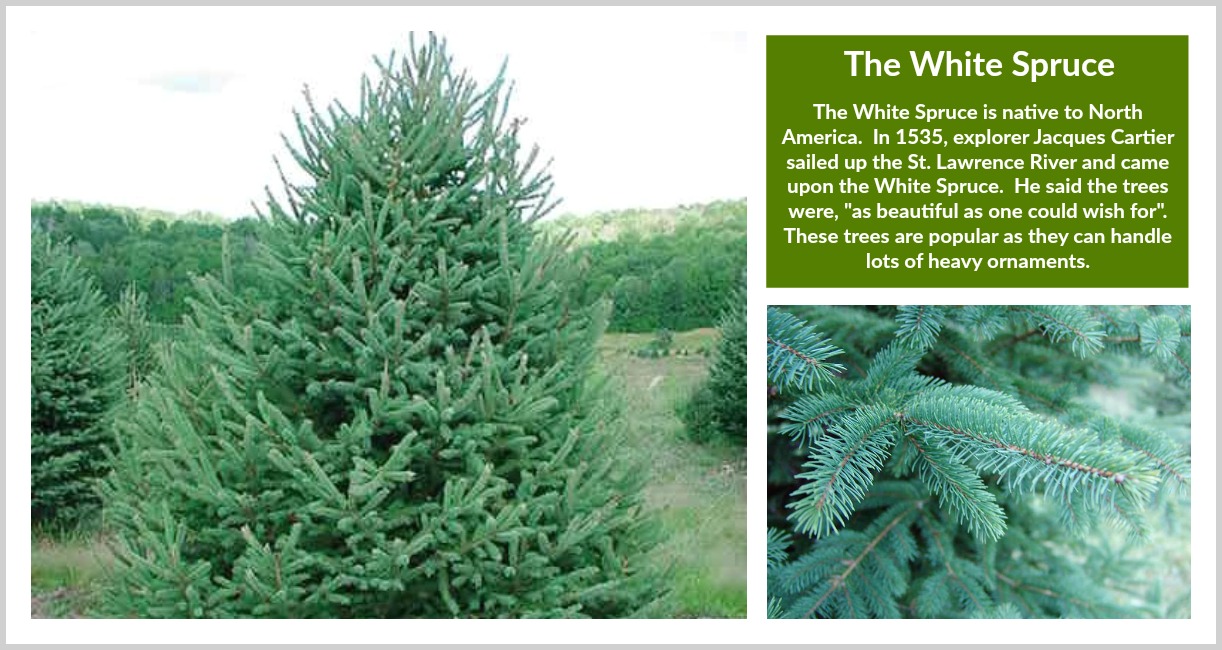
White spruce is a medium-sized conifer found in northeastern United States and throughout Canada. It is the state tree of South Dakota. White spruce has a cone-shaped crown, and when grown in the open develops a conical crown which extends nearly to the ground. This habit along with the spreading branches give it a nice appearance for use as an ornamental. Trees often reach 80-140 feet in height and 1.5 to 3 feet in diameter. The oldest white spruce may reach 300 years of age. Leaves (needles) are needle-shaped, and are often somewhat crowded on the upper half of the branchlets. Needles are usually 1/2 to 3/4 inch long, blunt at the tip and green to bluish-green in color. Typically, needles are 4 angled (4-sided) and are present on short twig-like structures on the stem (sterigmata). The bark is thin, light grayish-brown and is produced in irregular, thin, scaly plates.
credit source : https://njchristmastrees.org/about-trees/


